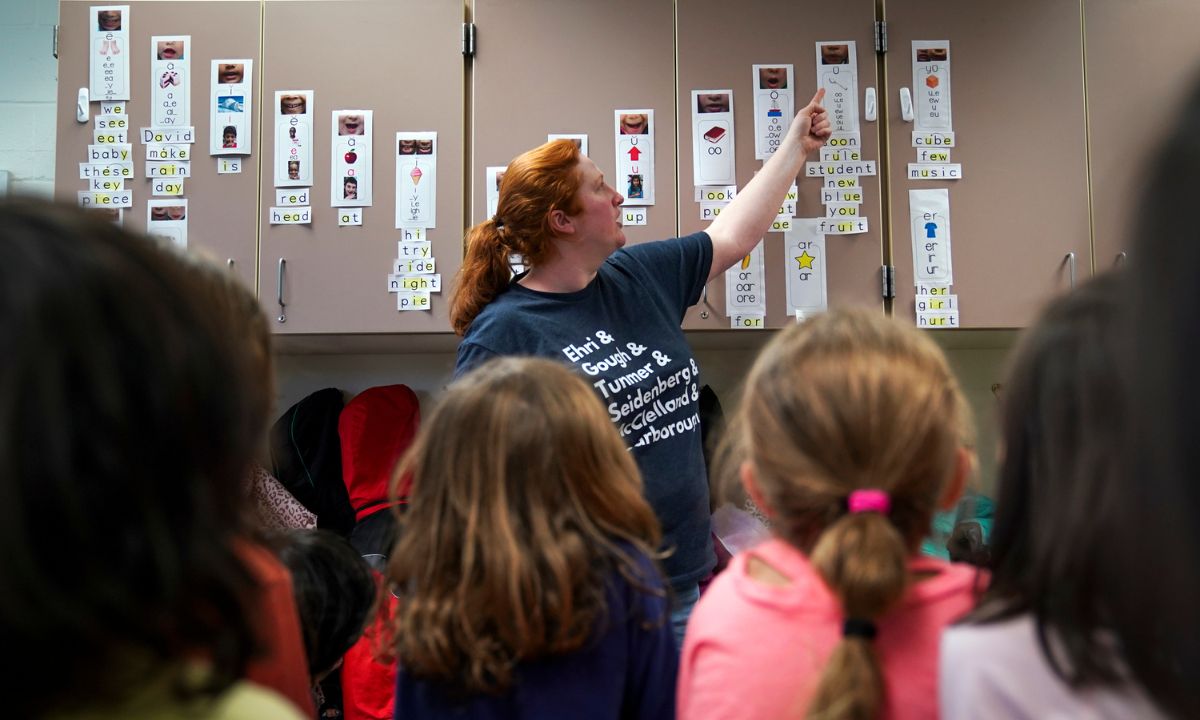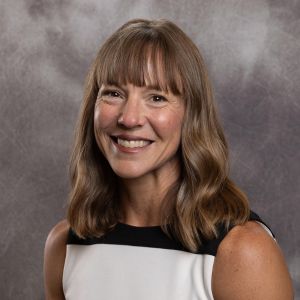How One Rural Elementary School Achieved Over 80% Reading Proficiency
Lambert: You don’t need a huge budget to transform reading outcomes. You just need a consistent, collaborative, data-based intervention model.

Get stories like this delivered straight to your inbox. Sign up for The 74 Newsletter
When you think of education innovation, you might not think of a small, rural elementary school in Buffalo, Wyoming.
But I’m here to change your perception.
About 4,500 Wyomingites call Buffalo home. My school, Cloud Peak Elementary, serves 225 students in grades 3 to 5, more than a third of them from low-income families. We have the equivalent of 19 full-time teachers and one full-time school counselor.
Before becoming principal of Cloud Peak, I’d taught in this building. I’d walked alongside teachers as the district reading coach. I knew the strengths of our staff, the heart of our students, and the potential within our walls. That familiarity became one of our greatest assets as we set out to transform the way we support every learner.
I didn’t design our school-wide intervention and extension model myself, but I had a front-row seat to its beginnings. Now, I have the honor of helping it evolve. I believe what we’ve built is not just working — it’s something other schools can do, too.
According to the 2024 National Assessment of Educational Progress (NAEP), only 31% of fourth-grade students performed at or above the proficient level in reading. The conclusion? Across the country, we’re falling short when it comes to reading instruction.
Until two years ago, Cloud Peak used a “traditional” intervention model. We identified the lowest performing students as “struggling readers.” They all received the same intervention regardless of their skill gaps. Does that sound like your school or district?
At the time, we didn’t have a systematic approach to ensure that interventions targeted the students who needed them most. While teachers were doing their best with the tools they had, there was no consistent way to measure if what they were doing was working — or if some students were slipping through the cracks. High-achieving students weren’t always given opportunities to extend their learning, and struggling students didn’t always receive the intensive support they needed.
We set up professional learning communities (PLCs) — groups of educators who work collaboratively to improve teaching and learning for all students — and received intensive training on using data to collaborate on innovative solutions.
We looked at our data and introduced diagnostic measures to identify specific skill gaps interfering with students’ reading ability, followed by diagnostic assessments to home in on targeted interventions. Then, we got to work.
In a small school, it takes every single staff member to run a successful intervention and enrichment program; one of our proudest accomplishments is investing in our support staff. Paraprofessionals are full members of our instructional teams, attending every professional learning opportunity and participating in PLCs. Several have completed Language Essentials for Teachers of Reading and Spelling (LETRS) traing, along with almost all of our certified teachers. That’s not common — but it should be.
Our most powerful shift was carving out a dedicated intervention and extension block, which we call “Reading I&E.” Every third, fourth, and fifth grader receives daily targeted reading instruction — support or enrichment — in addition to regular core reading instruction. Each grade level holds I&E at a different time, so our entire staff can support it. Even I teach when I can — whether it’s stepping in briefly, modeling a lesson, or leading enrichment. It’s a clear reminder that every adult in our building is a reading teacher.
While traditional models might offer intervention a couple of days a week to the lowest performing readers, we do intervention and enrichment every day for every student. Since I&E is built into our master schedule, students aren’t pulled out of science or social studies class for intervention.
These I&E blocks are non-negotiable. They reflect our belief that all children deserve instruction tailored to their needs. Learning to read is that important because it unlocks every other type of learning.
Reading I&E instruction is deeply responsive. We group students based on data and regroup them every three weeks using curriculum-based and state assessments and benchmarks. Teachers, interventionists, and paraprofessionals sit together to review the data. We reflect, regroup, and make adjustments. Our weekly PLCs build on that work, helping us stay aligned, share strategies, and get better together.
In fifth grade, for instance, all students read novels, but their experience varies greatly depending on their needs. Enrichment for stronger readers includes book talks, character interviews, and story mapping. Intervention for others includes vocabulary, explicit decoding support, and structured scaffolds to boost comprehension.
No one is stuck in a label. Every student constantly learns and grows with the support or enrichment they need.
Since introducing Reading I&E, we’ve seen improvement in student outcomes. Our first group of students to experience this model made remarkable gains — moving from 5.4% below the state average on the third-grade assessment to 11.2% above the state average just two years later as fifth graders.
Looking at third-graders at the end of this school year, 100% showed growth and improved their correct-word-per-minute scores; 82% scored proficient in reading. We decreased the share of students flagged as “at risk” in reading skills by three percentage points, and we increased students who scored “advanced” by five percentage points.
Plus, fluency scores improved across all grade levels. More importantly, our students are transferring skills from instruction to real-world reading tasks. That’s the goal.
This journey hasn’t just changed how we teach — it’s changed how we think. Instead of saying what we used to do was wrong, we simply say, “We’ve found something that works even better.”
We’re still learning. Right now, we’re working to refine our common formative assessments so they align tightly with our instruction. In Grade 3, we’re also identifying students who’ve mastered foundational skills so we can transition them into more advanced reading work. It’s a good challenge to have: How do we best serve kids who are ready to stretch?
I’m sharing our story because our model is replicable, and it works. It engages educators and meets students exactly where they are — even if that changes over time. For us, having students who don’t learn how to read is simply not an option. You don’t need a magic curriculum or a huge grant. You just need to be willing to think differently.
Get stories like these delivered straight to your inbox. Sign up for The 74 Newsletter

;)
